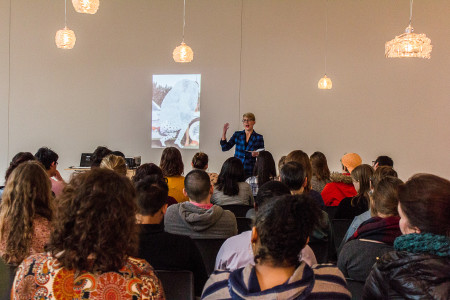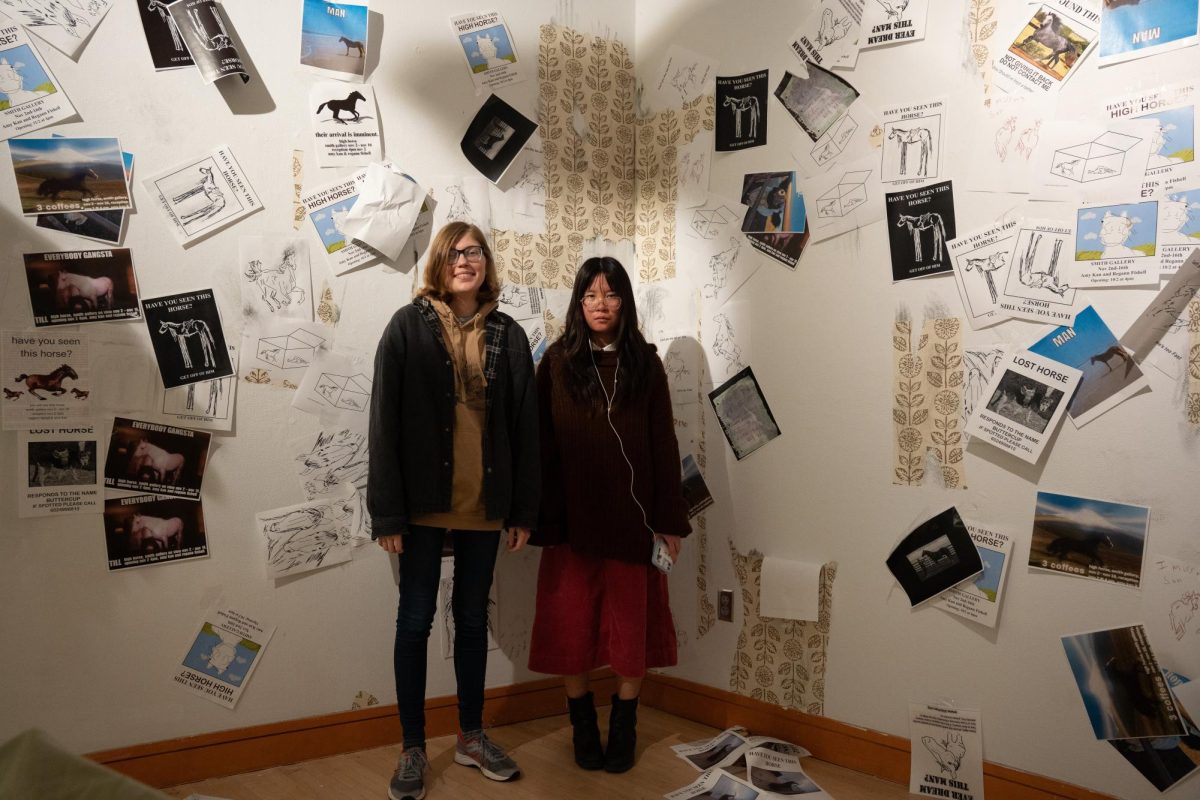Megan Tcheng
tchengme@grinnell.edu
Last Tuesday, Feb. 16, Professor Leah Allen, English and Gender, Women’s and Sexuality Studies, continued Faulconer Gallery’s newest arts education series. Formatted as short but in-depth presentations, 20 Minutes @ 11 allowed faculty members to interact with art in Faulconer Gallery and share their unique perspectives with the Grinnell community.

“We often try to bring in outside speakers, but we realized we have a great resource here on campus,” said Lesley Wright, Director of Faulconer Gallery. “We started 20 Minutes @ 11 … to have a brief encounter with a work of art and a faculty member.”
Allen’s talk, entitled, “Doing it right? Feminist approaches to sex, censorship and pornography,” addressed Beverly Semmes’ “The Feminist Responsibility Project (FRP).” At the heart of the Semmes exhibit is her collection of paintings and drawings. These 2D pieces, which interact with pornographic images from vintage “Hustler” and “Penthouse” magazines, intentionally conceal and reveal provocative aspects of the original images. Through this visual experimentation, Semmes’ project addresses the distinct tension between feminist values and censorship in American culture.
Allen, in her exploration of Semmes’ 2011 piece, “Carwash,” addressed the feminist tension in Semmes’ collection. Specifically, Allen identified how the artist’s pieces reflect the progression of the feminist movement and the stigma surrounding female sexual identity.
“Semmes’ exhibit pushes us back to previous point in time where the idea of a ‘Feminist Responsibility Project’ made sense and resonated with people,” Allen said. “Today, the idea of a singular, feminist responsibility is at odds with third and fourth wave feminism.”
Drawing on this social foundation, Allen encouraged audience members to address their own biases towards pornographic imagery and the portrayal of woman in media.
“Semmes forces us to look for the pornographic,” Allen said. “We become almost ‘dirty-minded’ when we look at her images … whether we like it or not, we’re in the position of looking for the background, looking for the pornographic. Semmes is asking us to examine that impulse to see what’s going on under the surface.”
Overall, Semmes’ art leaves its audience with a series of unanswered questions. Allen posed such questions to her audience.
“Who gets to decide what sexual images are permissible or impermissible?” Allen asked. “Do we get or do we have to see these images?”
While Allen may have no direct answer to her questions, she sees the controversial nature of Semmes’ pieces as reflective of the culture at Grinnell College.
“Censorship is relevant to our campus climate,” Allen said. “People have strong opinions about the material we should look at, whether we should critique things that are offensive or whether we should just avoid them. … Having students, having staff, having faculty come and look at [Semmes’ work] transforms the piece—it gives it a whole different life.”



















































